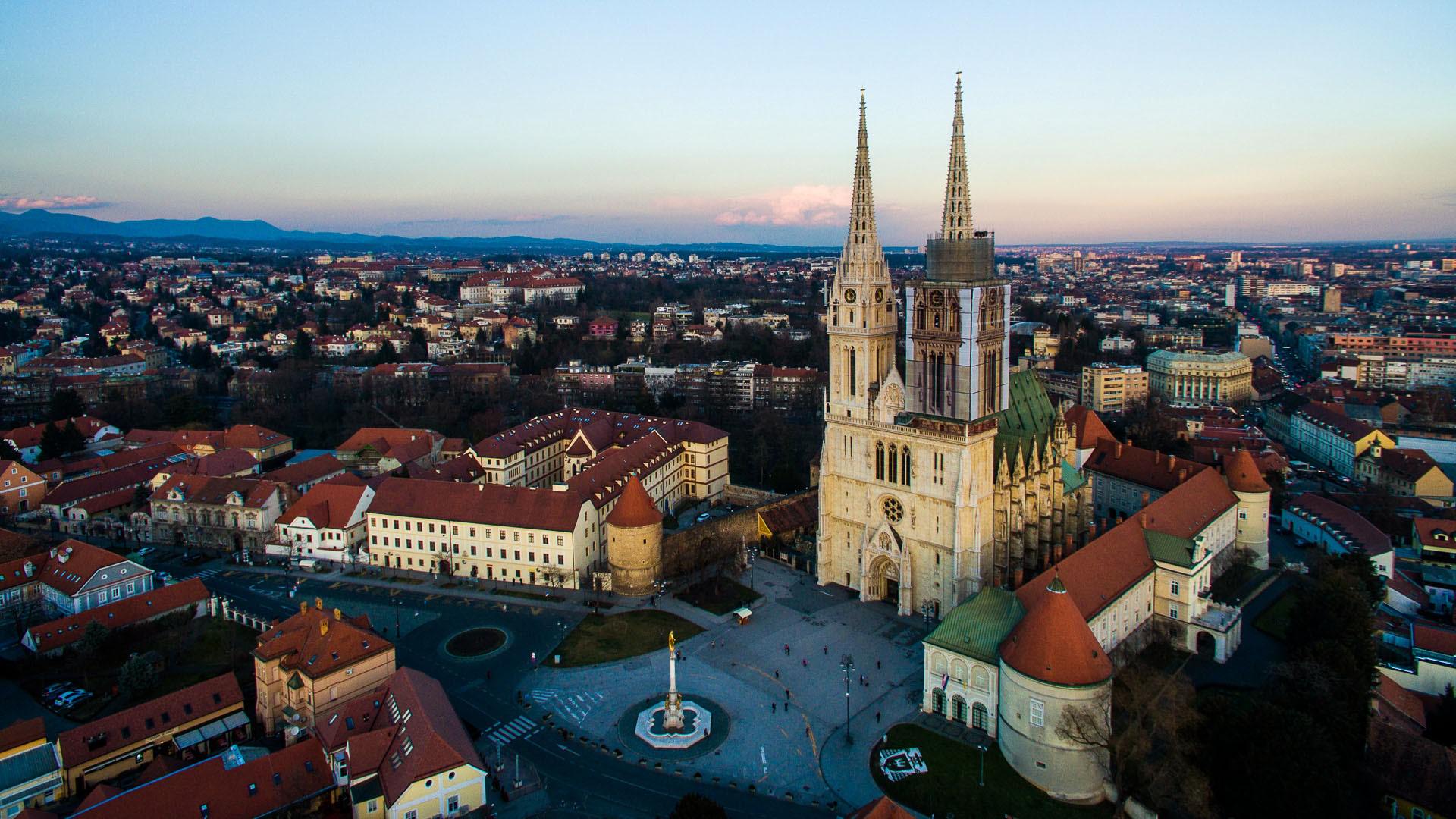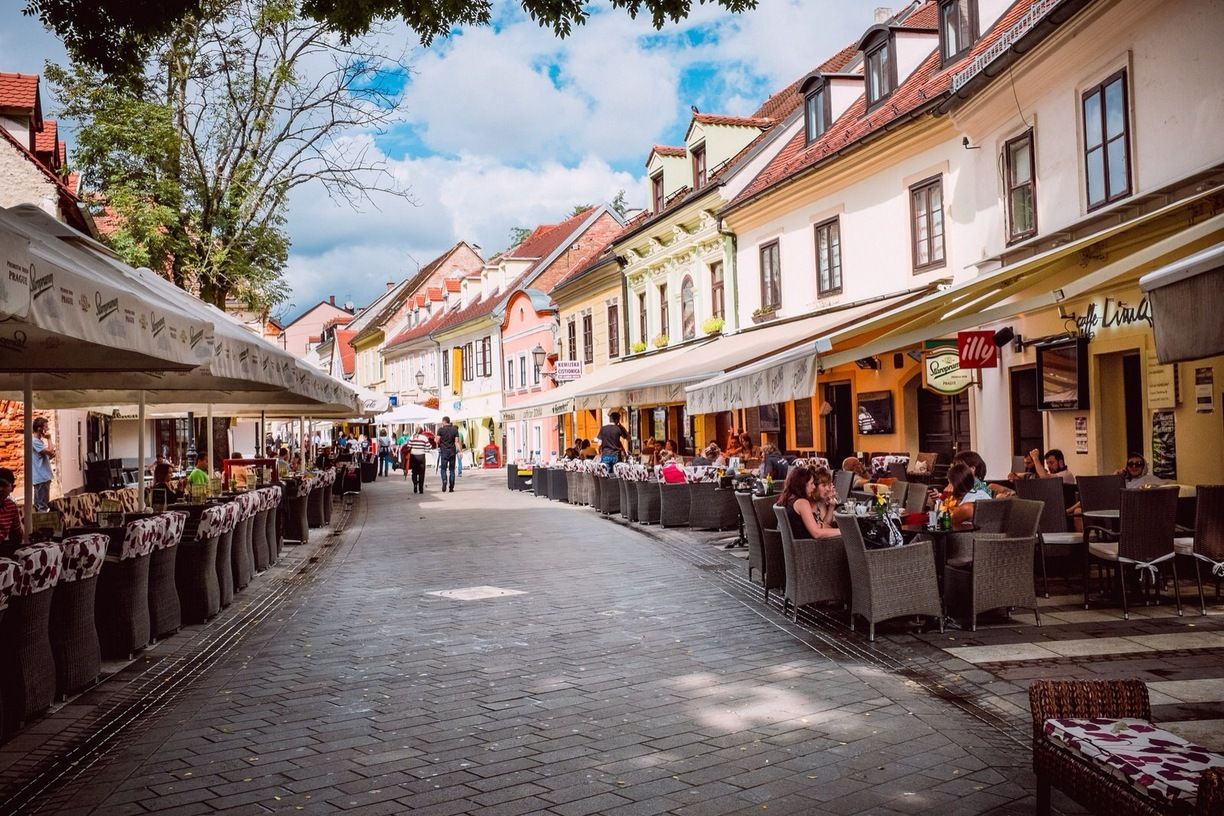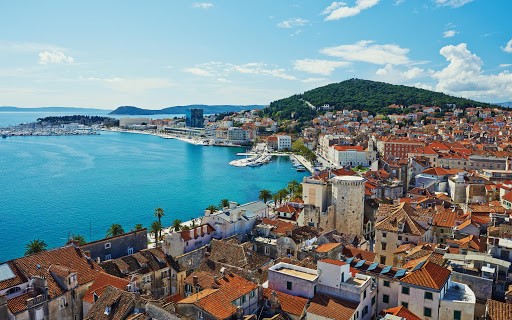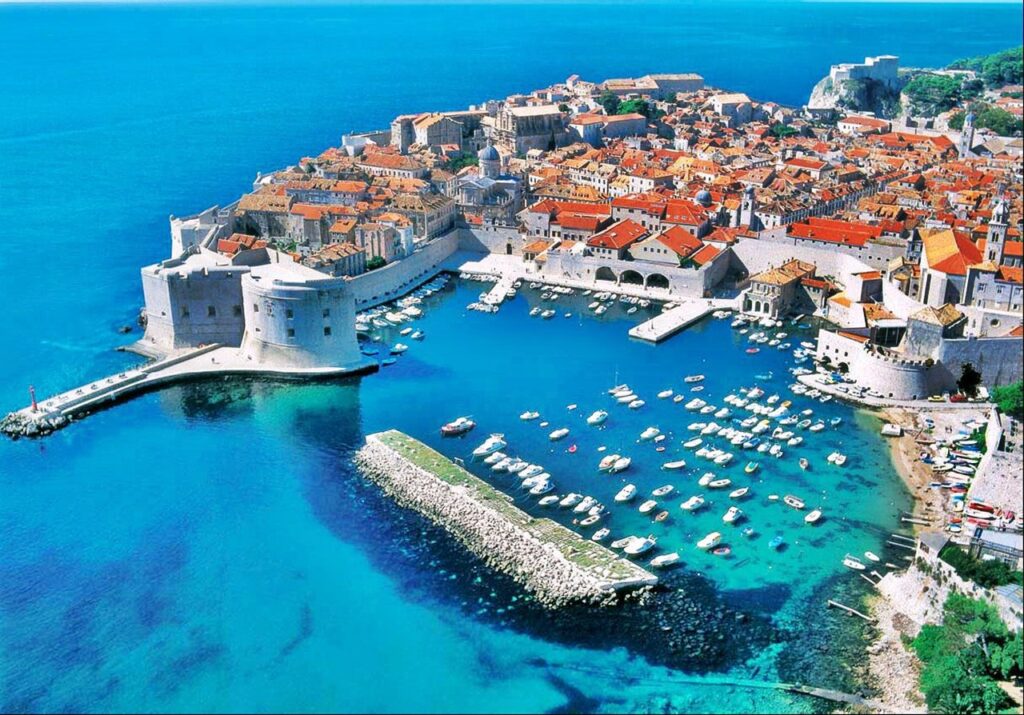CROATIA
Croatia, country located in the northwestern part of the Balkan Peninsula. It is a highly geographically diverse crescent-shaped country.
The upper arm of the Croatian crescent is bordered on the east by the Vojvodina region of Serbia and on the north by Hungary and Slovenia. The body of the crescent forms a long coastal strip along the Adriatic Sea, and the southern tip touches on Montenegro. Within the hollow of the crescent, Croatia shares a long border with Bosnia and Herzegovina, which actually severs a part of southern Croatia from the rest of the country by penetrating to the Adriatic in a narrow corridor.
Croatia is the sparkling Mediterranean destination that offers a stunning coastline, gorgeous ancient cities and lush national parks. Perfect for history buffs, keen foodies, outdoor adventurers and sun worshipping beach lovers, it has everything you could ask for from a seaside European destination.
Zagreb
Zagreb, capital and chief city of Croatia. It is located in the Pannonian Basin and situated on the slopes of Medvednica Hill (Zagrebačka Gora) to the north and the floodplain of the Sava River to the south.
Zagreb’s old town consists of two medieval settlements on the hill: Grič, the civil settlement, which was renamed Gradec (“Fortress”) when it was encircled by walls that were built to defend against the Mongols in the 13th century; and Kaptol, the ecclesiastical settlement, which was fortified in the 16th century.The city has many open squares and parks. As the cultural centre of Croatia, Zagreb is the seat of the Academy of Sciences and Arts and of the University of Zagreb (1669). Several art galleries have both old and modern collections, and there are various museums and academies of art, theatre, and music. The Croatian National Theatre is housed in a neo-Baroque building in the city.Another reason to visit Zagreb is its numerous historical monuments and medieval architecture.


The old town of Zagreb can be reached on foot starting from Ban Jelacic Square, the central part and the heart of Zagreb. This is the usual starting point for sightseeing tours through the three historical parts of Zagreb: the Upper Town (Gornji Grad), Kaptol and the Lower Town (Donji Grad). Another very famous square in Zagreb is St.Mark Square, easily recognisable for its red-white-blue roof features. The square houses the neo-classical Parliament and the baroque Ban’s Court Palace, the traditional residence of Croatian viceroys in the 19th century, and currently the seat of the Government. With its numerous beautiful churches and varied architecture, interesting museums and elegant squares, Zagreb is a perfect destination for those willing to experience the true spirit of old Europe and escape tourist crowds. Zagreb has a colourful architecture, ideal to explore by foot. Austro-Hungarian palaces, medieval cottages, bell-bottomed church spires, and brutalist housing blocks all populate different corners of the city, and Zagreb claims to have more museums per square metre than any other city.
The city has a dynamic nightlife, plenty of decent restaurants and cafés, and lots of entertainment and regular events for all. Zagreb has instant access to the Adriatic coast. Thus, those who come to the picturesque Croatian beaches for a relaxing vacation, have a perfect opportunity to combine their quiet holidays with intense historic sightseeing.
Split
is located on the Southern point of Croatia’s coast, in between Zadar and Dubrovnik. As the second largest Croatian city next to the inland capital of Zagreb, Split has over 178 thousands inhabitants and covers a total of nearly 80 square kilometers. The rustic Old Town is decorated with preserved, historic monuments, while the urban outskirts of Split are rougher around the edges. Nestled in the heart of Split, Diocletian’s Palace makes up around half of the old town in the city. The impressive Roman structure dates back to the 4th century AD and was constructed for the Roman emperor Diocletian, his family, guards and servants. It was built with the intention of being the emperor’s retirement seaside retreat, and served this purpose until his death in 311. It was later abandoned and left in ruins. It’s now listed as a UNESCO World Heritage Site and is one of the most popular areas to explore on a trip to Croatia. Split is extremely accessible by plane, boat, or bus, depending on where you are coming from. Split does have a small airport if you’re coming from an international destination. You can take ascenic ferry across the Adriatic if you’re coming from Italy or the Dubrovnik area. It has a unique setting. Its dramatic coastal mountains act as the perfect setting to the turquoise waters of the Adriatic. To the north is dominated by the Dinaric Alps that form the border with Bosnia and Herzegovina, while mountains Mosor, Kozjak and Biokovo divide the coastal line from its interior.

Zadar
The port of Zadar, with its characteristic rectangular shape, is situated on a peninsula and is the historical capital of Dalmatia.
Zadar was one of the most important cities of the maritime Republic of Venice for centuries. The port is located in the old town, which overlooks a large bay to the northwest, while the tourist area is in the north.
Zadar’s old town, based on the Roman urban structure, houses the main monuments of Venetian origin dating back to the mediaeval period.
Stroll down to the end of the peninsula where the historic centre of Zadar is nestled, and you’ll start to hear the calming sounds of the famous Sea Organ. This architectural piece of art consists of tubes and holes carved into the harbour wall. When the waves gently crash into these holes, it creates a wonderful musical sound similar to an organ. Make your way here at sunset and take a seat near the musical object to enjoy a free performance as the sun goes down – sunsets in Zadar are famous in Croatia for being some of the best!
Dubrovnik
Dubrovnik – also known as “the pearl of the Adriatic” – is indeed an amazing town and also known as King’s Landing from Game of Thrones.
Of course no list of the best things to do in Croatia would be complete without speaking about the medieval city walls of Dubrovnik. The Old City of Dubrovnik and its Medieval walls have been designated a World Heritage Site by UNESCO. Parts of the walls date from the 13th century. Walls have always been a part of Dubrovnik’s history and have been mentioned in writings as far back as the 9th century A.D., when the Saracens besieged the city for 15 months before giving up. The city was completely enclosed by walls by the 13th century A.D. and its citizens continued to fortify and repair them from that time on.
Gruž is Dubrovnik’s suburb/neighbourhood grown around the large bay that spreads on the west side of the town. In the way it is the main entrance to Dubrovnik – all ferries, cruise ships and buses arrive in Gruž as the main port/harbour, ferry terminal, cruise port and bus station are all located there. All boats for day trips to Elafiti and Mljet Island leave from there. In the old days, Gruž was kind of summer retreat bay of wealthy inhabitants of Dubrovnik.

Plitvice
Plitvice is a UNESCO heritage site due to its breathtaking views, its fauna and the unique turquoise waters of the lakes.
Plitvička Jezera National Park is located in the middle of the country and is about 130 km from the capital of Zagreb which is great, because it is an easy day trip from Zagreb or from Split.
The beauty of the National Park lies in its sixteen lakes, inter-connected by a series of waterfalls, and set in deep woodland populated by deer, bears, wolves, boars and rare bird species. The National Park covers a total area of 300 square kilometres, whilst the lakes join together over a distance of eight kilometres.
There are not many places that showcase Croatia’s natural beauty quite like Plitvice National Park. A scene straight from a fairy tale, it’s a great destination in both summer and winter, although summer is significantly more crowded. The park consists of sparkling blue and green lakes, cascading waterfalls and verdant forest surroundings. As the most popular national park in the country, it’s also the best setup for tourists with wooden walkways and flat trails bringing you to the best viewpoints of the lakes.

Opatija
Opatija is the place where Croatian tourism originated. One of the most unique places on the Adriatic coast is excatly the city of Opatija. The first thing you’ll notice here is the distinguished architecture reflecting the 18th & 19th century style of rich bourgeoisie of Austria who had their summer homes in here. Almost every hotel in city is a 5 star hotel with ballroom and crystal chandeliers, decorated with class and style. Opatija is located directly on the shore and has one of the most beautiful seaside promenades in Croatia, called Lungomare.
Some of the most romantic and most stylish weddings in Croatia are being organized in here, since its astonishing architecture is the best decor for any wedding photo. Opatija is a classical beauty and is therefore the most suitable wedding destination in Croatia for a traditional wedding from a fairytale. Sitting on the Istrian peninsula, Opatija faces the Kvarner Gulf and is protected by the embrace of the Učka mountain behind, where asparagus grows wild. This charmed location lends Opatija a great year-round climate, with hot summers and mild winters. Lungomare promenade weaves along the coast and begs to be explored at leisure. The seven miles of walkway will take you to Volosko – a dreamy fishing village next to Opatija. Fishing boats sway in the pretty harbour, and you can try thick tuna steaks, creamy Istrian truffle-flavoured dishes and seafood risottos served up in seafront restaurants.
Opatija has excellent traffic connections with Europe so you surely won’t have any trouble reaching it from anywhere.

